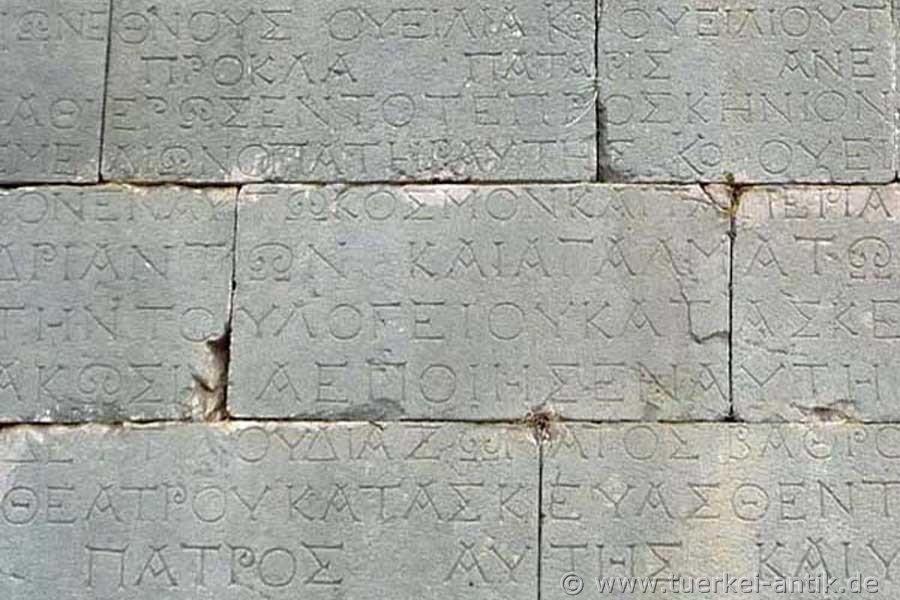 |
|
Ancient Theater in Turkey Patara |
||||||||||||
 |
|
|||||||||||
|
||||||||||||
|
The Greek theatre of Patara was completely liberated from the sand only in the years 2002 to 2004. Under the Roman Emperor Hadrian (117 - 138 A.D.) the stage house was built, the cavea extended upwards and fitted with a sun sail. Remains of a foundation indicate that in the course of this work a small theatre temple was erected on the upper spectator stands. According to the inscription on his mausoleum, the rich Opramoas from Rhodiapolis donated a considerable sum for the reconstruction of the theatre in Patara after the devastating earthquake in 141 AD. However, experts seem to disagree as to whether the earthquake of 141 AD also affected Patara. Opramoas could have acted as a financier even without the earthquake. In the 3rd century A.D. the Orchestramauer was erected and the orchestra was converted into an arena. Since the extension works under Hadrian the theatre had a capacity of approx. 15,000 spectators. |
||||||||||||
| The history of Patara: | ||||||||||||
|
Patara was one of the six largest cities of the Lycian League since the 6th century BC. Since Alexander the Great Patara belonged to the sphere of influence of the Hellenistic empires and was an important naval base in the Diadochian Wars. Ptolemy II temporarily renamed it Arsinoe. In Roman times Patara maintained its leading position in Lycia; it was Metropolis and seat of the governor of the province Lycia et Pamphylia. The apostle Paul stayed in Patara during his third missionary journey (53-58 AD). Patara was once the most important port city of Lycia and the birthplace of St. Nicholas, later bishop of Myra. The port of Patara, which - as can still be seen today - stretched about 2 km inland, has been slowly deserting since antiquity. This happened by continuous sand washing of the near, fast flowing river Xanthos and formation of shifting dunes. The port was finally abandoned in the Middle Ages (13th century). For some time now, selective excavations have been taking place. The remains of larger buildings can be seen in the area: a Roman triumphal arch with three passages, baths, a theatre, a granary of Hadrian's time and two aqueducts.
During the Roman Empire, Patara was, along with Andriake, one of the most important ports for the Egyptian grain fleet, first for Rome, then increasingly for Constantinople since the 4th century AD. Under Emperor Hadrian, a large granarium was built around 130 AD on the west side of the port to store the grain. |
||||||||||||
|
|
||||||||||||
|
|
||||||||||||
|
|
||||||||||||
|
|
||||||||||||
|
|
||||||||||||
|
|
||||||||||||
|
|
||||||||||||
|
|
||||||||||||
|
|
||||||||||||
| Inscription on the outside of the stage house | ||||||||||||
 |
||||||||||||
| Photos: @chim | ||||||||||||
| Translation aid: www.DeepL.com/Translator | ||||||||||||
| Source: Wikipedia and others | ||||||||||||
|
|
||||||||||||

